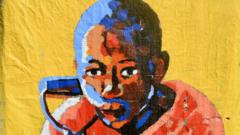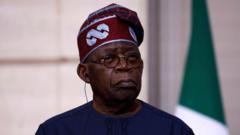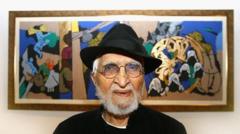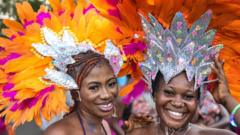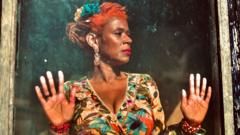At the Tate Modern, the voices of Nigerian art are resonating like never before. 93-year-old painter Bruce Onobrakpeya, reflecting on the exhibition 'Nigerian Modernism', expressed it as 'one of the greatest things' for his art and Nigerian artwork as a whole. This exhibition showcases the rich tapestry of Nigeria's artistic journey, featuring over 50 artists whose works span from 1910 to the 1990s.
Within the halls of Tate, a collection that fuses indigenous techniques such as bronze casting and mural painting with European styles brings forth a diverse narrative that reflects Nigeria's colonial past, tumultuous history, and its transition into modern society.
Onobrakpeya describes Nigerian Modernism as a blend of 'old ideas' and 'new expressions', emphasizing the importance of this movement in presenting Nigeria's present and future. Walking through the exhibition, one can find works ranging from naturalistic paintings and vibrant abstract creations to political cartoons, seamlessly weaving together the experiences of various ethnic groups across Nigeria.
The exhibition captures not just artworks but also the spirit of creativity that flourished during the vibrant 1960s and 70s, a period defined by both artistic exploration and political upheaval. The showcased pieces, including works by prominent artists like Nike Davies-Okundaye and El Anatsui, offer insights into the lived experiences and cultural narratives of Nigeria.
Osei Bonsu, the exhibition's curator, highlights the principle of collectivity that guides the artists, showcasing how their works together form a radical vision of modern art. As Nigerian Modernism runs until May 10, 2024, it aims to illuminate a movement that has been long underrepresented on the global art stage, leaving visitors with a message of hope and resilience.



